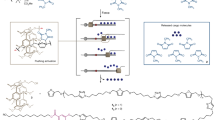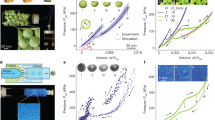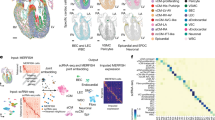Abstract
Growing cells within an extracellular matrix-like 3D gel is required for, or can improve, the growth of many cell types ex vivo. Here, we describe a protocol for the generation of well-defined matrices for the culture of intestinal stem cells (ISCs) and intestinal organoids. These matrices comprise a poly(ethylene glycol) (PEG) hydrogel backbone functionalized with minimal adhesion cues including RGD (Arg-Gly-Asp), which is sufficient for ISC expansion, and laminin-111, which is required for organoid formation. As such, the hydrogels present a defined and reproducible, but also tunable, environment, allowing researches to manipulate physical and chemical parameters, and examine their influence on ISC and organoid growth. Hydrogels are formed by an enzymatic cross-linking reaction of multiarm PEG precursors bearing glutamine- and lysine-containing peptides. PEG precursors containing either stable or hydrolytically degradable moieties are used to produce mechanically softening hydrogels, which are used for the expansion of ISCs or the formation of organoids, respectively. We also provide protocols for immunofluorescence analysis of cellular structures grown within these matrices, as well as for their dissociation and retrieval of cells for downstream use. Hydrogel precursors can be produced and their mechanical properties characterized to ascertain stiffness within 5–7 d. Hydrogel formation for ISC expansion or organoid formation takes 1–2 h. The materials described here can be readily adapted for the culture of other types of normal or transformed organoid structures.
This is a preview of subscription content, access via your institution
Access options
Access Nature and 54 other Nature Portfolio journals
Get Nature+, our best-value online-access subscription
$29.99 / 30 days
cancel any time
Subscribe to this journal
Receive 12 print issues and online access
$259.00 per year
only $21.58 per issue
Buy this article
- Purchase on Springer Link
- Instant access to full article PDF
Prices may be subject to local taxes which are calculated during checkout




Similar content being viewed by others
References
Lancaster, M.A. & Knoblich, J.A. Organogenesis in a dish: modeling development and disease using organoid technologies. Science 345, 1247125 (2014).
Hughes, C.S., Postovit, L.M. & Lajoie, G.A. Matrigel: a complex protein mixture required for optimal growth of cell culture. Proteomics 10, 1886–1890 (2010).
Kleinman, H.K. & Martin, G.R. Matrigel: basement membrane matrix with biological activity. Semin. Cancer Biol. 15, 378–386 (2005).
Vukicevic, S. et al. Identification of multiple active growth factors in basement membrane Matrigel suggests caution in interpretation of cellular activity related to extracellular matrix components. Exp. Cell Res. 202, 1–8 (1992).
Nelson, C.M. & Bissell, M.J. Of extracellular matrix, scaffolds, and signaling: tissue architecture regulates development, homeostasis, and cancer. Annu. Rev. Cell Dev. Biol. 22, 287–309 (2006).
Gjorevski, N. et al. Designer matrices for intestinal stem cell and organoid culture. Nature 539, 560–564 (2016).
Lutolf, M.P. & Hubbell, J.A. Synthetic biomaterials as instructive extracellular microenvironments for morphogenesis in tissue engineering. Nat. Biotechnol. 23, 47–55 (2005).
Saha, K., Pollock, J.F., Schaffer, D.V. & Healy, K.E. Designing synthetic materials to control stem cell phenotype. Curr. Opin. Chem. Biol. 11, 381–387 (2007).
Tibbitt, M.W. & Anseth, K.S. Dynamic microenvironments: the fourth dimension. Sci. Transl. Med. 4, 160ps124 (2012).
Caliari, S.R. & Burdick, J.A. A practical guide to hydrogels for cell culture. Nat. Methods 13, 405–414 (2016).
Ehrbar, M. et al. Biomolecular hydrogels formed and degraded via site-specific enzymatic reactions. Biomacromolecules 8, 3000–3007 (2007).
Lorand, L. & Graham, R.M. Transglutaminases: crosslinking enzymes with pleiotropic functions. Nat. Rev. Mol. Cell Biol. 4, 140–156 (2003).
Sternlicht, M.D. & Werb, Z. How matrix metalloproteinases regulate cell behavior. Annu. Rev. Cell Dev. Biol. 17, 463–516 (2001).
Lutolf, M.P. et al. Synthetic matrix metalloproteinase-sensitive hydrogels for the conduction of tissue regeneration: engineering cell-invasion characteristics. Proc. Natl. Acad. Sci. USA 100, 5413–5418 (2003).
Sato, T. et al. Long-term expansion of epithelial organoids from human colon, adenoma, adenocarcinoma, and Barrett′s epithelium. Gastroenterology 141, 1762–1772 (2011).
Hennink, W.E. & van Nostrum, C.F. Novel crosslinking methods to design hydrogels. Adv. Drug Deliv. Rev. 54, 13–36 (2002).
Lin, C.C. Recent advances in crosslinking chemistry of biomimetic poly(ethylene glycol) hydrogels. RSC Adv. 5, 39844–398583 (2015).
Rosales, A.M. & Anseth, K.S. The design of reversible hydrogels to capture extracellular matrix dynamics. Nat. Rev. Mater. 1, 15012 (2016).
DeForest, C.A. & Anseth, K.S. Advances in bioactive hydrogels to probe and direct cell fate,. Annu. Rev. Chem. Biomol. Eng. 3, 421–444 (2012).
Wang, H. & Heilshorn, S.C. Adaptable hydrogel networks with reversible linkages for tissue engineering. Adv. Mater. 27, 3717–3736 (2015).
Kloxin, A.M., Kasko, A.M., Salinas, C.N. & Anseth, K.S. Photodegradable hydrogels for dynamic tuning of physical and chemical properties. Science 324, 59–63 (2009).
Sato, T. et al. Single Lgr5 stem cells build crypt-villus structures in vitro without a mesenchymal niche. Nature 459, 262–265 (2009).
Yin, X. et al. Niche-independent high-purity cultures of Lgr5+ intestinal stem cells and their progeny. Nat. Methods 11, 106–112 (2014).
Acknowledgements
We thank D. Hacker and the EPFL Protein Expression Core Facility (PECF) for the production of R-spondin, Noggin and EGF; D. Pioletti for rheometer use; and N. Brandenberg and A. Negro for technical assistance.
Author information
Authors and Affiliations
Contributions
N.G. conducted the experiments. M.P.L. and N.G. wrote the manuscript.
Corresponding author
Ethics declarations
Competing interests
The École Polytechnique Fédérale de Lausanne has filed for patent protection on the technology described herein, and M.P.L. and N.G. are named as inventors on those patents; M.P.L. is a shareholder in QGel SA, which is active in the commercialization of similar synthetic matrices for cancer applications.
Rights and permissions
About this article
Cite this article
Gjorevski, N., Lutolf, M. Synthesis and characterization of well-defined hydrogel matrices and their application to intestinal stem cell and organoid culture. Nat Protoc 12, 2263–2274 (2017). https://doi.org/10.1038/nprot.2017.095
Published:
Issue Date:
DOI: https://doi.org/10.1038/nprot.2017.095
This article is cited by
-
Cell–extracellular matrix mechanotransduction in 3D
Nature Reviews Molecular Cell Biology (2023)
-
Cellular mechanisms of heterogeneity in NF2-mutant schwannoma
Nature Communications (2023)
-
Mechanical stretching boosts expansion and regeneration of intestinal organoids through fueling stem cell self-renewal
Cell Regeneration (2022)
-
Implementing organ-on-chip in a next-generation risk assessment of chemicals: a review
Archives of Toxicology (2022)
-
Organoids: a promising new in vitro platform in livestock and veterinary research
Veterinary Research (2021)
Comments
By submitting a comment you agree to abide by our Terms and Community Guidelines. If you find something abusive or that does not comply with our terms or guidelines please flag it as inappropriate.



